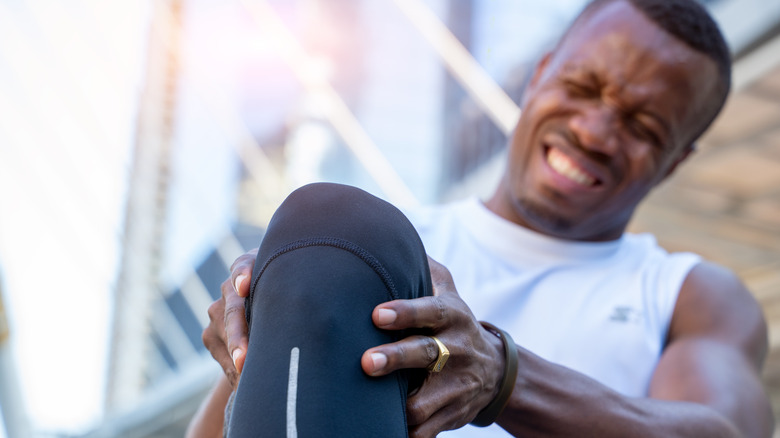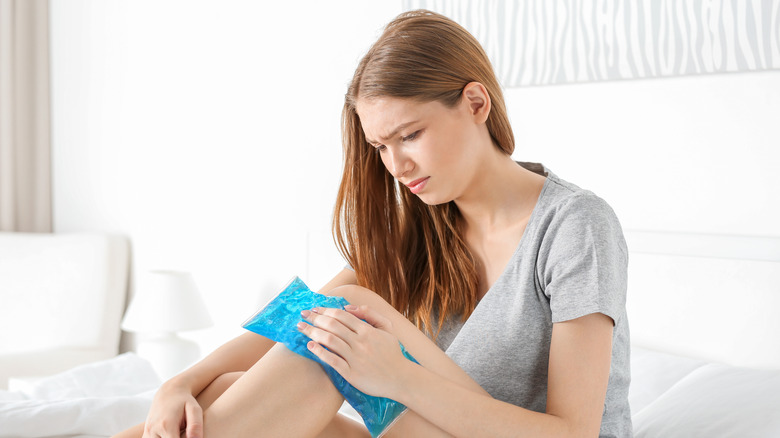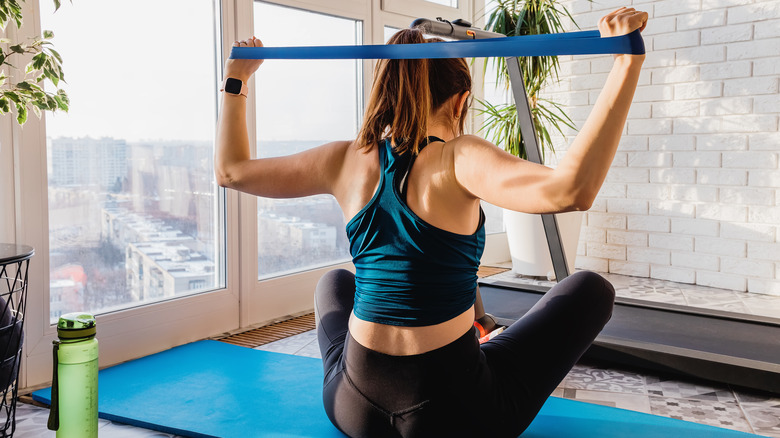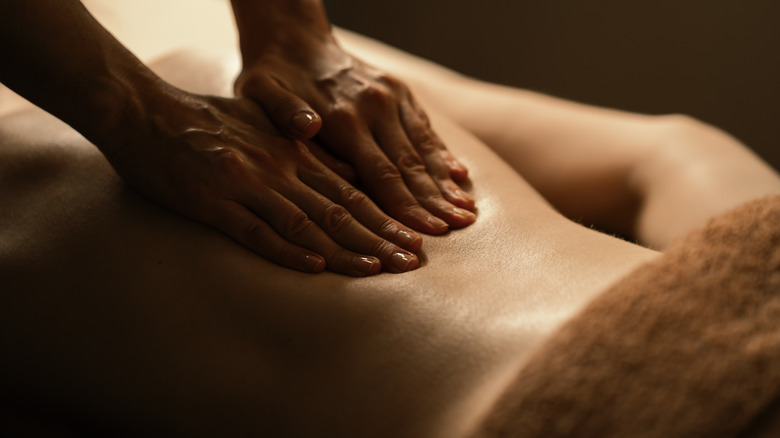5 Ways To Relieve Pulled Muscles
We've all had mornings after a workout where our body aches from the stress we put our joints and muscles through. Whether it's caused by a workout of heavy lifting or an unusually long run, our bodies will let us know when they've had enough. However, if you enjoy working out, you probably don't feel like you have time to be sore. Although you want to keep your body strong and healthy, it's best if you listen to what your body is telling you and pamper it if you're so sore it hurts, says Active.
No matter which activity produced your sore muscles, learning to give your body what it needs is good practice. In order to take care of your sore muscles properly and give yourself much-needed TLC, there are steps you can take that will help you recover and get back to the running path or the gym. Some of the tips may surprise you!
Remember RICE
You may remember hearing the acronym RICE from your school nurse growing up, and that is still the number one at-home remedy for sore muscles. The R stands for resting the sore area, and I signifies the need for icing the sore muscle. C reminds us to compress the muscle with a bandage to reduce blood flow, and E stands for elevating the sore muscle when you can (via Medical News Today). RICE is an excellent approach to get you back to your routine.
Deep stretch
If your sore muscles are in your arms or your back, DynaPro recommends using a resistance band to perform stretches. By putting the band behind your back and pulling it in the opposite direction with each arm, you should feel a nice stretch of those muscles. If your leg muscles are sore, consider traditional yoga moves like downward dog and child's pose to massage the muscles that hurt. Allowing your muscles to feel the benefits of a long stretch can help to ease your pain.
Deep tissue massage
If RICE and stretching still won't help the pain, you may want to get a massage for your injured areas. Make sure to mention to the massage therapist that you have tender spots and show them where they are located. If they know you're sore, they can target their pressure to the areas giving you trouble. When a therapist applies contact to your skin, it awakens the vagus nerve, which releases chemicals into your bloodstream, says Stretch 22. Massage sessions can last anywhere from half an hour to 120 minutes, depending on your needs.
Over the counter help
If you've tried to work out the muscle on your own or with the help of a massage therapist and you are still struggling, it may be time to seek relief from anti-inflammatory meds like Tylenol or Ibuprofen. These over-the-counter meds can lessen inflammation and give you enough relief to perform your daily tasks or help you get some much-needed rest. Duke Health suggests that while these medications can help you temporarily, they should never be consumed long-term.
Light exercise
It may seem counter-intuitive to alleviate pain by returning to a workout, but movement may be just what you need to find relief. When choosing a light workout, focus on low-impact exercises like walking or using the elliptical machine at your gym. A yoga workout will give you the added stretch while you move. Gentle workouts such as these will help get you back to your routine faster (via Spine Health).
Sore muscles do not have to last for weeks, and they certainly shouldn't get in the way of your fitness goals. By using at-home methods to lessen your discomfort, you may be able to get back to your routine in no time. However, allowing yourself time to heal will get you back to what you love to do sooner without creating additional injuries.





